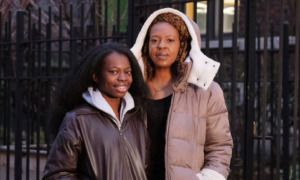 Do something today your future self will thank you for. There are books — in fact, volumes — of literature devoted to inspiring or motivating internal positive change. A quick search on the internet reveals thousands of well-known quotes to stimulate and galvanize personal reflection. Even our new year’s traditions begin with thoughts of self-improvement and renewed motivators. Many of us, however — whether aiming to diet, get out of debt or get a new job — struggle to realize those aims as our initial inspiration wanes.
Do something today your future self will thank you for. There are books — in fact, volumes — of literature devoted to inspiring or motivating internal positive change. A quick search on the internet reveals thousands of well-known quotes to stimulate and galvanize personal reflection. Even our new year’s traditions begin with thoughts of self-improvement and renewed motivators. Many of us, however — whether aiming to diet, get out of debt or get a new job — struggle to realize those aims as our initial inspiration wanes.
In reality, whether you are 20, 40 or 70, positive and lasting behavior shifts require commitment, strong internal motivation and concrete plans. And we aren’t always equipped by ourselves to create the change we need. Real-world struggles, bad habits and cyclical, even destructive behavior patterns can get in the way.
Developing and supporting intrinsic motivators in the social service realm is proving to be a critical tool for caseworkers across systems. Studies show that motivated clients — those who are actively engaged in determining and pursuing personal goals — often achieve higher self-sufficiency outcomes such as stable housing and employment. Many social service agencies formally integrate client self-empowerment strategies into their case management approach.
Motivational Interviewing (MI), perhaps the most widely adopted strategy, uses collaborative counseling approaches designed to help clients understand and use their internal motivation to create positive change. While originally used in clinical settings, social service professionals in housing, workforce and nutrition settings have started using the technique.
MI is a person-centered communication method that can help program participants access their internal motivation for change. MI allows participants to identify their own reasons for undertaking change and build their own personal development plan accordingly. Similar to client-centered counseling, MI emphasizes respect for participant choice, empathy and positive encouragement.
Engaging in MI requires a cultural shift for participants and caseworkers, requiring intensive training and supervision and organizational support. For many caseworkers, it can be difficult to transition to a process where the participant determines how to develop and follow through on a personal development plan. The caseworker’s role then shifts to one of a guide, offering self-management tools but being led by the participant’s choices and decisions.
Studies show that MI can be effective for encouraging positive behavior change, even with respect to substance use, eating disorders, risky sexual practices and violence. MI also aligns with positive youth development principles that aim to boost confidence and competence. While practitioners apply MI with diverse populations and behaviors, it generally includes four phases:
- Engage: Establish a strong working relationship between the participant and caseworker. The caseworker may use eye contact, use “we” in sentences and show genuine interest in a participant’s goals to help build rapport.
- Focus: Identify what behaviors the participant would like to change and begin the process of developing an action plan to make those changes.
- Evoke: Elicit the participant’s motivations for positive change. Open-ended questions help the participant elaborate on goals so the caseworker is able to gather more in-depth information.
- Plan and move: Use the participant’s goals and translates them into action steps that are used throughout the participant/caseworker relationship.
While MI can occur over a series of sessions with a trained caseworker, there have been multiple short-term programs targeted at specific behaviors that show MI’s promising outcomes. For example, SafERteens, aims to prevent future violence and alcohol abuse among youth who come to emergency rooms for illness or injury. Using computer-based assessments, exercises and role-play scenarios, SafERteens helps young people learn techniques to recognize problems, understand their motivation for change and develop a sense of self-efficacy. A randomized control trial of a therapist-led version of SafERteens showed a 43 percent reduction in severe aggression toward peers one year after implementation, compared to a 26 percent reduction in the control group.
Computer Assisted Motivational Intervention – Plus (CAMI – Plus) helped teen mothers make more responsible choices around future pregnancy. In Baltimore, counselors combined the CAMI – Plus computer assessment with short MI sessions conducted in the teen mother’s home. The computer assessment gathered information on the teen’s sexual relationships, contraceptive use and condom use to gauge her level of risk for pregnancy and sexually transmitted infection. Trained counselors used this information to guide MI sessions geared at helping teens overcome their ambivalence to preventing additional births in rapid succession. A 2009 randomized control trial showed that teens who participated in CAMI-Plus had a lower birth rate than those in the control group.
They say nothing’s impossible if you put your mind to it. In many ways, MI techniques are proving that age-old quote true. No doubt, lasting behavior change is difficult, but MI can help ignite those necessary intrinsic motivators to guide the way, even in the face of what can feel like daunting and insurmountable hurdles.
Nicole Pexton, M.P.P., is a former associate with ICF. Nicole has worked for many years in the areas of research and data analysis at federal and state education and workforce development programs.
Patrick Heiman, M.P.A., is a training and technical assistance manager with ICF. Patrick has nearly a decade of experience in the fields of workforce development, case management training and self-sufficiency programs.































